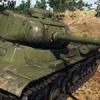There are niche games, and then there are niche-within-a-niche games. Then there are Flight Simulators. Within that are Combat Flight Simulators.
For those not familiar with the genre, basically it’s like playing a FPS - but inside a cockpit, flying an aircraft and dogfighting with others. Combat Flight Simulators vary in complexity and depth. Some, such as the very (by Flight Simulator standards at least) popular War Thunder by Gaijin, straddle the border between Arcade action and, depending on the difficulty setting, simulation. Others, such as the famous (or infamous) DCS (Digital Combat Simulator) by Eagle Dynamic, are so deep into the Simulation section that you begin to wonder if they’re more complex than the Aircraft they depict. Supposedly the manual for the A-10C Warthog is 500 pages long. I know that my Ka-50 Blackshark manual runs to 534 pages.
Every one of these Flight Simulators, from the arcade to the ridiculous, have their own foibles, their own community and their own good parts. It’s up to you to decide which one will suit you, and which one you’re brave enough for.
Digital Combat Simulator focuses primarily on modern aircraft, with a slight tangent into WWII with the P-51 Mustang. DCS now has a handsome line up of half a dozen fully-detailed craft - including both Helicopters and Aircraft - as well as several more from the earlier Flaming Cliffs series. There is even an add-on allowing you to control ground forces. Coming up soon are several more fully-detailed DCS aircraft including the first third party add-on for DCS, the MiG-21bis. For those interested in WWII aircraft, a successful Kickstarter campaign enabled a team to begin working on a WWII Operation Overlord-era Simulation entitled DCS WWII: Europe 1944 (acronym pending).
The impression I give you is one of insane complexity. 500 page manuals? Jets? How can you possibly call this a game? How can you enjoy it?
But there is a joy in complexity. The start-up procedure for the Ka-50 runs to about 4 pages. The weapons procedures run to a similar number. But the feeling you get as you run through them - watching the lights slowly come on, the slow roar of the APU as it fires up, then the rising thunder of your engines starting up - is something else.
I can still feel the excitement of the first time I fired up the Ka-50. Sure, I over-revved and crashed soon afterwards, but that’s part of the fun. It’s very frustrating, it’s tiring, but at the end of the day when you do manage to surmount those obstacles and fly the thing into combat and out again, it’s a feeling not to be missed. DCS can be played for free off with one aircraft, the relatively simple SU-25T, on offer.
For those of a World War II persuasion there is Maddox Game’s Il-2 Sturmovik Cliffs of Dover, published by Ubisoft. This, launching off the back of the legendary Il-2 Sturmovik series suffered a disastrous launch, and after several patches which did little to lift the game from the depths it had sunk to, it was left to rot.
Happily however, for those desperate to get into this iconic time of Spitfires and Messerschmitts, Team Fusion - an unaffiliated third party developer - is on hand to help. Their server is always populated and the bugs have largely been ironed out, to the point that new features are being added.
If you want a taste of DCS WWII then CloD (by which Cliffs of Dover is affectionately known) is your go-to Simulator. With more than a dozen extremely detailed clickable cockpits and some of the best engine sounds on the market, CloD is the most detailed combat flight sim money can buy. If you’re in for an experience not quite as detailed as the DCS series, but keeping the satisfaction of your first engine start intact, then Cliffs of Dover is where you go. Thanks to its disastrous release, it is also nowadays one of the cheapest titles on the market. Whilst most of the other Simulators mentioned here go for US $20 or more, some sales can see Cliffs of Dover brought down to $5 or less.
The world of Flight Simulators dips down in complexity at this point, but rises in both popularity and (by comparison with Cliffs of Dover, at least) quality; bug-wise and release-wise. This area is the home of the 777 Studios’ series of Combat Flight Simulators. Their first, Rise of Flight is the only original and modern Combat Flight Simulator to deal with the iconic World War I period - sadly overlooked these days in favor of the more glamorous Second World War.
Rise of Flight was originally released in 2009 by Neoqb, before being acquired by 777 Studios. It has grown from its original release of four pilotable planes to thirty-seven, ranging from single-seater scouts to heavy bombers and even sea-planes. Over five years, Rise of Flight has continuously proven how a dedicated development team can continue to create quality content, thanks to a small but extremely dedicated - and vocal - community.
The joy of Rise of Flight is found in its difference to every other era. Instead of modern aircraft, or the extremely well-designed piston-engine aircraft of the Second World War - where the technology of piston-engine fighter craft was reaching its peak - Rise of Flight delves into an age where flight was only a decade old and where its future was unknown.
The dogfighting that comes with it is a mess of close-quarter brawling, where it’s all too easy for you to pass within metres of each other. If you want to learn how old-school dogfighting was conducted, then this is probably the best place to go. Rise of Flight is also now free-to-play, with all features and two aircraft being on offer from the get-go as well. The free aircraft are no lightweights either. Perhaps the greatest strength of Rise of Flight is its relative simplicity. There are no clickable cockpits, and many aircraft don’t even require a start-up procedure, often thanks to the simplicity of the aircraft themselves.
The other CFS in 777’s stable is Il-2 Sturmovik: Battle of Stalingrad. Once again taking its lineage from the classic Il-2 Sturmovik, it continues to focus on the Eastern Front of World War II. Developed in partnership with 1C publishers, BoS has the virtue of being one of the best-developed Simulators to date, with Developer blogs every Friday and new content for the Early Access nearly as often. The developers have been remarkably open about almost every single part of the game, and have been (all too rare in video game development in general) clear and often blunt about what will work, what won’t work, and what they have planned. So far the community response has been very positive.
Set during the terrible Battle of Stalingrad, this CFS combines the finest example of a map of Stalingrad to date, with exquisitely-modeled aircraft. The engine start procedures are more simplified, and there are no clickable cockpits - but this is excusable thank to the incredible feeling of flight that has been successfully migrated alongside the rest of the Rise of Flight engine used to create the game. Currently, the entry fee is high for what you get in comparison with other games; but when the Simulator is released, it’s likely that the price will drop. But for true flight-sim addicts, the dog-fighting is probably the finest out there.
This brings us to War Thunder, which is a bit of a grey area. The hard-core pilot in me wants to ignore the game completely, but the rest of me recognizes that this is perhaps the most well-known and the most readily identifiable Flight game around. War Thunder has something of a stigma around it, when it comes to the more hard-core community of flight simmers. It has a vast line-up of more than two hundred aircraft, and dozens of maps to go with it. It’s also an MMO - thus you begin at the bottom with early 1930s aircraft, and slowly progress all the way through to the 1950s Korean War warriors. War Thunder offers three modes, ranging from arcade - the most popular and simple way to play, with flight models that would make a DCS pilot weep - to “Simulator” battles where there are no icons (unless you get close to friendlies) and the cockpit is forced on.
War Thunder’s Flight models have always been a sticking point. Whilst the developer claims that it’s accurate, more often than not they are “balanced” (an enigma to Hard-core Pilots “Balanced? Who needs balance when I’m above them and they haven’t seen me?”) to suit the game. The most commonly-voiced problem that hard-core pilots have with War Thunder is that it teaches pilots bad habits.
Ultimately, it comes down to a matter of preference. But the question you really need to ask yourself, is whether you want instant flight and instant action (which War Thunder delivers in spades), or a slower experience where you learn the aircraft
and its foibles first before preparing the perfectly-planned and timed bounce on the enemy so that he never knows what hit him.
A note on Flight Simulator Communities: we’ve been involved in many gaming communities, and honestly, the finest, most honorable (big ask in the gaming community) and dedicated has to be the flight simulator community. They can sometimes be the most mature and helpful guys around. I’ve even had one buy me a new joystick to replace my old and inaccurate one. So if you’re looking for a community that won’t shout “noob” and scream and cry if they’re losing, then the great majority of the Flight Simulator community will fit the above bill. I’m no balanced viewer, but multiplayer is at the end of it all about human interaction and it’s always better to have friendly people about than screaming Neanderthals whose chat looks like it has been typed out with a rock.
The impression we’ve given you is of a world of unending complexity, which offers no rewards but what you have to give yourself. But it isn’t like that.
Flight Simulators combine some of the most difficult situations possible with some of the most white-knuckle moments you can possibly think of and some of the finest and most dedicated communities out there. You’ll never want for help or guidance. If you’re tired of the same old games that you’ve been playing for years, then Simulators are worth try. Some, as above are even free.
The only other entry fee can often be just the price of a joystick, which can come in at as little as twenty dollars in some areas. Flight Simulation is such a different bird from the rest of the videogame world that it’s worth checking out just to see what the fuss is about - and to impress your friends with your knowledge of the Ka-50’s autopilot system, of course.
At the very least, it’ll be a change.






